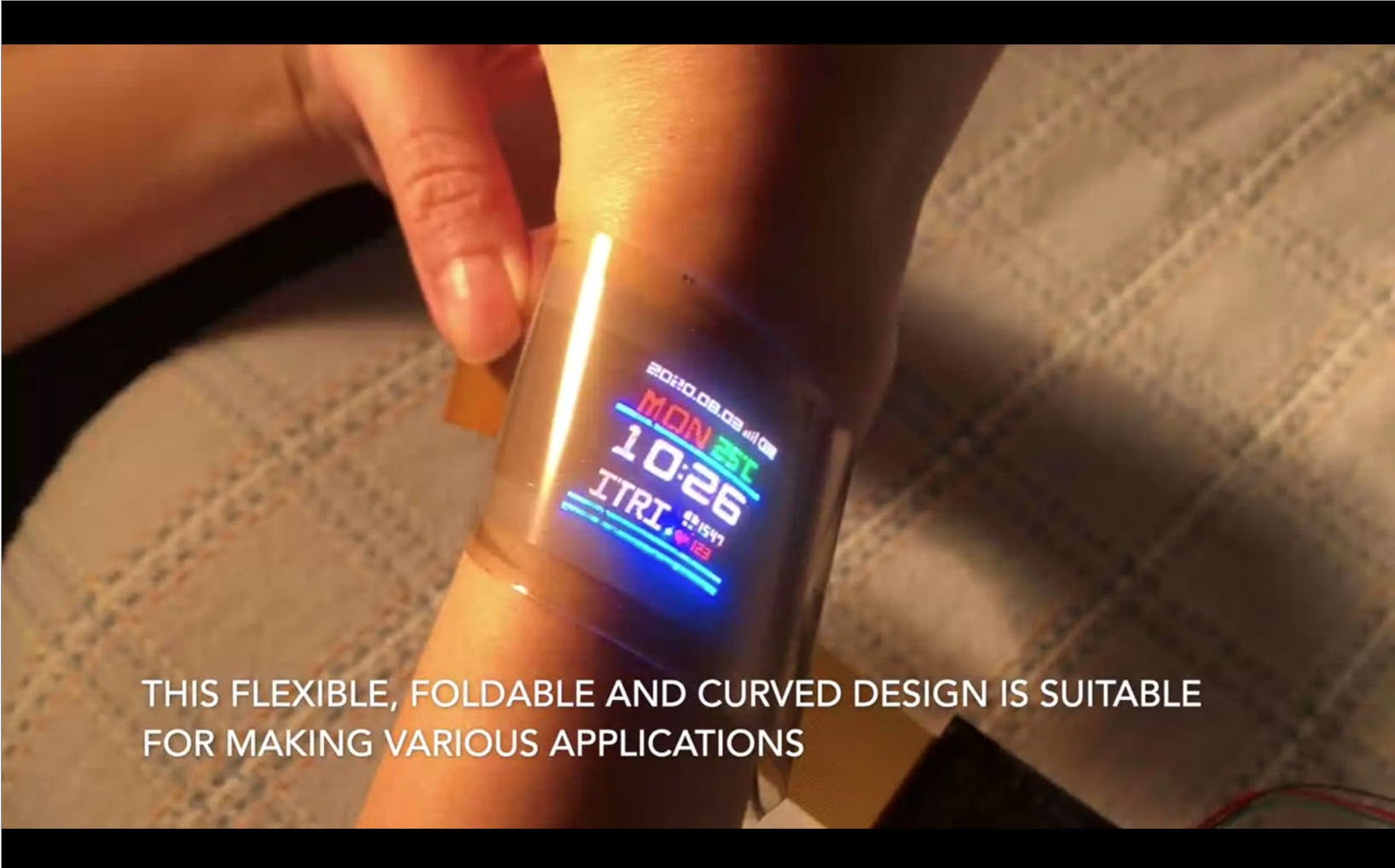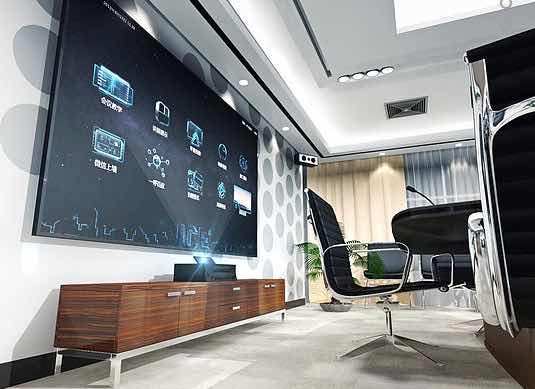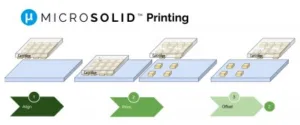Next generation microLED display technology is still evolving. A glimpse of that was seen at DisplayWeek 2020. While some suppliers showcased microLED display prototypes virtually, others in the supply chain presented about materials, process and technology innovations that will help the commercialization of products.

MicroLED provides the best features of LCD and OLED display and has the potential to outperform both technologies. It is still not in volume production due to manufacturing, production, scaling and yield issues. Technology innovations are critical in enabling cost reductions and volume productions so that microLED can compete effectively with OLED and LCD in future.
MicroLED Display: Prototypes Shown Virtually
Many suppliers including AUO, Playnitride, Tianma, ITRI, Jade Bird Display and others showcased virtual prototypes of products focusing on a variety of applications.
AUO
AUO focused on auto applications and showed its LTPS TFT driven 12.1-inch (169 PPI) microLED display with glass backplane and its latest 9.4-inch (228 PPI) flexible display with PI (Polyimide) co-developed with Playnitride. The automotive application is considered to be ideal for mid-sized microLED display because of its higher brightness, reliability, and ability to operate in very wide temperature range.
 AUO showed these Auto Displays. Click for higher resolution
AUO showed these Auto Displays. Click for higher resolution
Tianma
Tianma showcased a 7.56-inch (114 PPI), >600 nits flexible and a 5.04inch (114 PPI), 600nits LTPS TFT microLED display for automotive applications. It also had 5.84″ MicroLED+E-Paper display for Ebook applications.
Playnitride
Playnitride demonstrated the advantages of microLED display for transparent and auto display. It showed its 7.56inch transparent display as well as other displays co-developed with AUO and Tianma. Its transparent display has 60% transparency. According to industry sources microLED has the potential to achieve 80% maximum transparency, which is higher than OLED.
ITRI
ITRI showed a flexible foldable and transparent microLED. Its curved design makes it suitable for various types of consumer applications
 Itri showed this foldable display. Click for higher resolution
Itri showed this foldable display. Click for higher resolution
Jade Bird Display
Jade Bird Display showed a 0.31-inch monochrome 720P (5000 DPI), a 0.22-inch 1080P (10K DPI), and a 0.13-inch VGA (6000DPI), microLED for microdisplays with Si-IC backplanes focused on AR/VR.
MicroLED Display: Technology Innovations Presented
Self-emitting microLED displays are simple in structure compared to OLED and LCDs but have a complex manufacturing process. MicroLED displays integrations can use a pick and place process where chips are transferred from epiwafers or carriers to the display backplane (LTPS or oxide on a glass or flexible PI substrate). It can also use a monolithic integration process which involves microLED arrays and backplane hybridization. Display integration, production and manufacturing process are still evolving to improve throughput and reduce yield issues. Manufacturing and yield problems can become an issue in several parts of the process such as epitaxy, chip making, mass transfer, bonding, driving technology, backplane, inspection and repair. At DisplayWeek many companies presented papers focused on improving transfer, inspections and manufacturing technology for microLED. iBeam, VueReal, InZiv and Compound Photonics presented at the Business Conference.
iBeam: GaN on Flexible Metal Technology
Instead of producing GaN LEDs on rigid 6-inch sapphire wafer at a high cost, iBeam has devised a new solution of fabricating LEDs directly on polycrystalline flexible metal foil (without transfer). Large area metal foil can replace sapphire wafers as a substrate for LEDs.
This way GaN production can scale up to Roll-to-Roll (R2R) manufacturing. This process can enable large scales monolithic integration of LEDs. In this scalable process a single-crystal-like layer is artificially created on polycrystalline or amorphous substrate (can be used also with glass or ceramic).
Their next step is to achieve milestone for low cost manufacturing process. According to the company, yield and reliability can improve greatly in their process compared to mass transfer approaches. Quantum Dot down-conversion for red and green color can also exceed DCI-P3 color gamut. The presentation said that the cost of display scales with area, not with the number of pixels, unlike other microLED approaches. So a 4K or 8K resolution cost will be same as 1K-resolution display. Also the R2R factory manufacturing cost can be lower ($100M) compared to a wafer ($1B) or LCD fab ($2B). The company said a process where low cost GaN deposition is combined with R2R production, can lead to substantial cost reduction (>20x reduction in Epi cost). This will enable microLED displays to be more cost competitive with OLED in future. Samsung Ventures has invested in the company. For more see iBeam Gets Help to Be Disruptive from a Tech Giant.
 The iBeam Ganox technology. Click for higher resolution.
The iBeam Ganox technology. Click for higher resolution.
VueReal: Micro-Solid Printing
VueReal presented information about their Micro-Solid printing technology which is said to solve limitation to yield, throughput, cost and performance. In the VueReal process MicroLEDs are printed directly from a cartridge to a display substrate selectively. This can reduce repair cost by 10 times. It has multi cartridge transfer (>100 cartridges at once) and multi color cartridge (RGB cartridge) can be used. As only one transfer is needed to populate red, green and blue, it can improve throughput by more than 3 times. It is also compatible with <5um vertical LEDs, compatible for TV, smartphone, watch, auto and other applications, as well as compatible with existing tool and with lateral, vertical and flip chips. Fully inspected cartridge can be use to identify defects, bin for performance, and protect microLEDs during printing, thus improving yields.
According to VuReal, their MicroSolid printing has competitive advantages over pick and place processes, especially for smartphone, tablet, IT, auto and TV use. Using their patented continuous pixelation solution they have demonstrated a 30K PPI LED array. The company is planning to start sales in 2021 – their solution of integrating an inspection cartridge with existing transfer tools can reduce repair cost and increase throughput. Then in 2023 the company is planning to sell their MicroSolid printer for high volume application markets such as TV, smartphone, IT and others. Their printing solution can be used for original mother glasses for those applications offering high yield and throughput. It can also be used for <10 micron microLEDs which will be critical for cost competitiveness with LCD and OLED.
 VueReal’s Process. Click for higher resolution
VueReal’s Process. Click for higher resolution
InZiv: High Resolution Inspection Tools
InZiv provides high-resolution inspection tools for microLED, OLED and QLED. It helps in nano-scale optical, spectral, and structural identification and characterization of sub-features and defects in display pixels. As display resolutions are getting higher pixels are getting smaller. InZiv said current inspection equipment lacks the resolution needed to identify and analyze defects on smaller pixels especially <5 micron. So an inconsequential defect in 50-micron size becomes a critical defect in 1-micron size microLED. InZiv’s equipment offers patented nano-optical inspection technology for light emitting pixel. According to the company, early detection of pixel defects results in substantial cost savings for display manufacturers improving quality and yield.
Compound Photonics: Advance Microdisplay Technology
Compound Photonics introduced its IntelliPix™ all in one microdisplay drive technology platform that focuses to accelerate sub 5 micron pixel microLED development for AR/MR. It features multiple video pipeline and system integration and address power optimization, latency and bandwidth use. Combined with CP’s integration capabilities for microLED array bonding, device packaging, testing, and optical engine designs this opens new possibilities in display size reduction that is required for next generation AR display. The platform will be available for demo in early 2021.
NS Nanotech: Bringing NanoLEDs to market
NS Nanotech presented a paper on submicron full color LED pixels for microLEDs at the symposium. With breakthrough in material science and performance the company has been able to develop nanoLEDS. The company demonstrated a bottom-up approach to the construction of micro-LEDs as small as 150nm in lateral dimension. Molecular Beam Epitaxy (MBE) was used to fabricate such nanostructured LEDs from InGaN, from the blue to red regions of the spectrum, providing a single material set useful for an entire RGB display. By using their research the company has developed catalyst-free nano-column growth, disc-in-nanocolumn architecture and pure photonic band gap LEDs using monolithic RGB integration in a single process step. The product can deliver next generation performance for LED with REC 2020 color gamut, color stability, best in class efficiency and nano-micron size LEDs. With innovation and collaboration through the supply chain, the submicron full color LED pixels for microLED can bring breakthrough in product development.
Technology innovations and supply chain collaborations are really critical for next generation microLED displays to transform them from prototypes to successful commercial products with volume production that can compete effectively with OLED and LCD in future.
Sweta Dash, President, Dash-Insights
Sweta Dash is the founding president of Dash-Insights, a market research and consulting company specializing in the display industry. For more information, contact [email protected] or visit www.dash-insights.com

